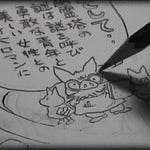Jason Allen used an AI-generated piece of art to win the Colorado State Fair in 2022. But critics were quick to argue that it does not have a soul.
AI can replicate the brushstrokes, color palettes, and composition of human artists. But it doesn’t stay up at night, haunted by a war like Picasso to produce “Guernica.”
So that raises the question, can AI make art that feels truly human?
I mean, AI-generated art can look so convincing, it’s easy to forget what’s really happening behind the scenes.
In 2023, a Midjourney-generated portrait titled “Synthetic Summer” went viral on Reddit and Instagram, with thousands of people mistaking it for a real photograph. But there is a reason these AI generated images look so realistic.
Models like DALL-E, Midjourney, and Stable Diffusion are trained on colossal datasets. LAION-5B, for example, contains over 5 billion images scraped from the open web.
According to Stability AI, this includes everything from classic paintings to modern photography, all created by people. The models learn to identify and reproduce the patterns, colors, and forms that humans find meaningful.
AI can convincingly mimic the brushwork of Van Gogh. It can replicate the dreamy palettes of Claude Monet and the bold compositions of Frida Kahlo.
But it’s not drawing from heartbreak, nostalgia, or personal vision. It’s calculating probabilities and assembling pixels based on what it’s seen before.
Take Hayao Miyazaki’s work at Studio Ghibli. “Spirited Away” took years of painstaking effort, with Miyazaki personally storyboarding every scene and infusing each frame with memories, fears, and hopes.
The emotion in Chihiro’s journey isn’t just in the colors or lines. It’s in the lived experience behind them. AI, by contrast, doesn’t feel wonder, sadness, or awe. It generates images in seconds using statistical models, not lived memories.
A 2023 study in Cognitive Research, Principles and Implications found that while people often rate AI generated art as technically impressive, they describe it as “emotionally flat” or “hollow” compared to human work.
What you see is a reflection of human creativity, filtered and recombined at high speed. The spark of true originality, the jump from emotion to expression, remains out of reach for the machine. For now.
But this is not enough to stop AI from transforming how creative industries work behind the scenes.
In 2023, The New York Times reported on how generative AI tools like DALL-E are outperforming at everything from illustration to advertising, with agencies like Ogilvy and WPP now integrating AI-generated visuals into major campaigns for brands like Nestlé and Coca-Cola.
In Hollywood, studios including Netflix and Marvel have started using AI to generate concept art, storyboards, and even early character designs, dramatically speeding up pre-production timelines. And all that is only raising millions.
The global AI image generator market was valued at $257 million in 2022. By 2023, it jumped to nearly $300 million. Projections from industry analysts expect it to move to over $917 million by 2030.
This is no hype but how a fundamental shift in how ideas get made.
Interior designers use tools like Midjourney and DALL-E to whip up dozens of mood boards and concept sketches in minutes, something that used to take days.
Filmmakers generate quick visual storyboards, testing out scenes and lighting before a single camera rolls.
Advertisers use AI to brainstorm campaign visuals, then handpick and refine the best ideas. This way everyone is getting more options, faster feedback, and less time wasted on dead ends.
Great artists use AI to brainstorm, then refine and filter through human taste. Take Refik Anadol, for example. He’s a pioneer in digital art. He feeds AI models massive datasets, like satellite images or museum archives, to generate raw material, then painstakingly curates and edits the results.
The human touch is what shapes the final piece. Fashion designers at brands like Balenciaga and interior architects at Gensler now rely on AI for rapid prototyping, but the finished product is always filtered through human taste and judgment.
AI is changing the pace and process of creativity, not the need for human vision. The people who survive in this new era are the ones who know how to use it to push their own ideas further, faster.
But even with all its data, AI consistently struggles with something.
It can reproduce a style, but it doesn’t “get” the visual inside joke or the hidden meaning. At least not consistently accurately.
When researchers tested AI generated poetry against human work in 2024, readers consistently found the AI’s attempts at metaphor and irony fell flat. They were technically correct, but it was missing the point.
Picasso’s “Guernica” was a raw outpouring of rage and grief in response to the bombing of a Spanish town. Van Gogh’s “Starry Night” came from months of mental turmoil and obsession.
These works are soaked in personal struggle, trauma, rebellion, experiences AI cannot have, no matter how advanced the algorithms.
Even the most realistic AI outputs don’t deliver the kind of happy accidents or flashes of genius that define human art.
When Midjourney produces an image, it’s drawing from statistical patterns rather than a sudden burst of inspiration.
When you look at AI-generated art or read something written by AI, it’s natural to start thinking the machine has intention or emotion behind it.
This is called the ELIZA effect. Back in the 1960s, a chatbot named ELIZA tricked people into believing it truly understood them, just by reflecting their words back in a clever way.
Human creativity is famously unpredictable. It’s messy, emotional, and often fueled by chaos. AI, on the other hand, is engineered for efficiency, coherence, and predictability.
This fundamental difference is why the biggest artistic breakthroughs still come from the human side of the equation.
The philosopher David Hume said that people naturally imagine things have feelings or intentions, even when they don’t. We give objects or situations qualities like being angry, kind, or scary, just because that’s actually how we feel.
So, if you feel something when you see an AI image, it’s because you’re bringing your own emotions and interpretations, not because the machine feels anything itself.
While AI can simulate conversation and even emotion-like responses, it fundamentally lacks any real desire, dreams, or inner life. It doesn’t want, hope, or fear. It just processes inputs and generates outputs.
What AI produces shows the patterns, aesthetics, and desires you feed into it. The real creativity comes from the human who selects, edits, and comes up with the final result. The spark still belongs to us.
If this made you rethink what “creativity” means in the age of AI, let me know.
The future of art is not about what machines can do but what we as humans want them to do.
Talk again soon,
Samuel Woods
The Bionic Writer






